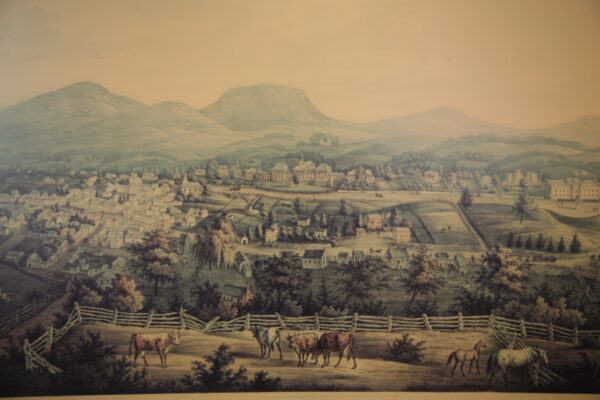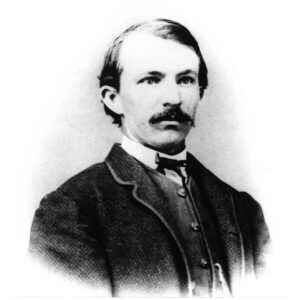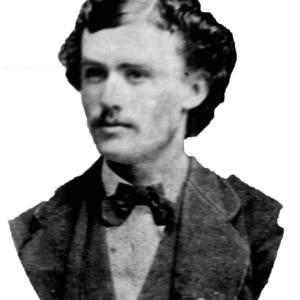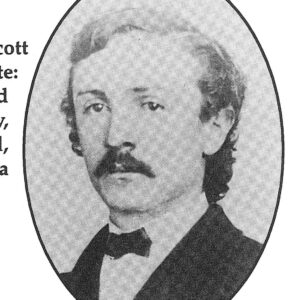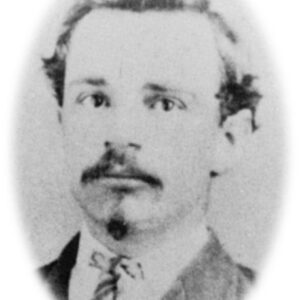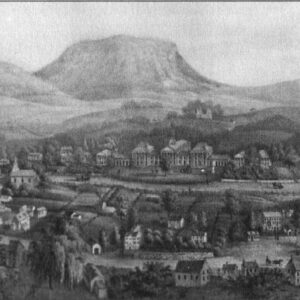Washington College, Lexington, Va. in the Shendandoah Valley (1860s)
Much rich history has been sown in the fertile soil of Virginia’s famed Shenandoah Valley. While many towns of this valley have laid claim to immortality, many people consider the tiny, Blue Ridge mountain town of Lexington a small piece of heaven. This town is the home of two great universities – Washington and Lee University and the Virginia Military Institute (VMI). It also neighbors Natural Bridge, one of the Seven Natural Wonders of the World, which was surveyed by George Washington and once owned by Thomas Jefferson. Lexington was a college town even before the United States became a country. Founded in 1749, Augusta Academy would become Liberty Hall Academy in 1776. The school was renamed Washington College in George Washington’s honor after he contributed $50,000 worth of stock to the school in 1796. After the death of Robert E. Lee in 1870, the school’s president, the college became known as Washington and Lee University.
In 1865, at the end of the bloodiest war our nation has ever seen, the two institutions were but shadows of their former selves. VMI had been burned nearly to the ground, and Washington College was severely damaged when it was used as Union barracks. With no money and no president, Washington College had somehow remained open throughout the war. During this time it served primarily as a preparatory school, with four professors teaching about forty boys who were too young to serve in the Civil War. The immediate previous president of Washington College before Robert E. Lee, was Rev. George Junkin. Junkin was an American educator and Presbyterian minister who served as the first and third president of Lafayette College and later as president of Miami University and Washington College (now Washington and Lee University). Junkin has been researched and found to have been staunchly anti-fraternity, and it is believed that if he had continued his presidency, the circumstances for KA to appear would not have been favorable.
However, the school’s trustees were determined to save their desperate college. On August 4, 1865, they met to discuss applying for a loan and the prospects for the college’s presidency. At that meeting, a board member rose and said that he had heard that Lee was looking for a position that would allow him to earn a living for his family. The trustees immediately elected Lee as president – contingent on his acceptance, of course. They offered him an annual salary of $1,500, and the use of a house and garden and a small percentage of the tuition. Everyone in the country knew that Lee could lead soldiers, but few remembered that he also had served as superintendent of the United States Military Academy at West Point. For Lee, the position in tiny Lexington was an opportunity to lead his people, not into battle, but into recovery. On August 31, 1865, Lee became the president of a school named for his mentor and his wife’s grandfather, George Washington.
“I think it is the duty of every citizen, in the present condition of the country, to do all in his power to aid in the restoration of peace and harmony,” he wrote to the trustees in his letter of acceptance. “It is particularly incumbent of those charged with the instruction of the young to set them an example of submission to authority.” Beset by the war’s legacy of poverty, only 50 students were enrolled at the time of Lee’s inauguration. As word of his presence spread, others arrived, until finally, 146 young men had registered for the college’s first post-war session. Among those first students were three of KA’s four founders, James Ward Wood, William Nelson Scott, and William Archibald Walsh. Founder Stanhope McClelland Scott, brother of William Nelson Scott, entered the college’s second postwar session in the spring semester of 1866.
An Idea is Born (1865–1866)
The story of how Kappa Alpha Order began revolves around James Ward Wood’s life experiences and influences. Wood planted the seed that Ammen cultivated into our Order. While Wood was born and raised in what is now West Virginia, his family in Hardy County was actually only fifteen miles or so from the newly created Virginia state line. Since young Wood was familiar with the countryside, he was assigned to patrol the borderland. Ammen believed that the military experience “made [Wood] confident. While at home on leave near the end of the war, Wood decided to ride out and visit a local girl. He prudently stuck his cavalry pistol into his boot as he was aware of dangers on mountain roads during wartime. As he mounted his horse, the pistol inadvertently discharged, wounding Wood’s foot. The wound was so severe that it ended Wood’s military service. As he recuperated during the spring and summer of 1865, Wood spent his time at the Lost River General Store. This country store, which still stands today, was a community center and a county office. There was a man at the store who was an incumbent in an important local office in Hardy County — he was apparently a great storyteller. He was also a Mason and a member of the Odd Fellows and a half dozen other secret societies. He fascinated young Wood with his stories of the lodge room. Ammen was convinced that “ … every proceeding of these secret societies were unfolded” to Wood without scruple, so that the summer’s recitals were equivalent to a course of lectures on the esoteric.” Wood was captivated by secret societies and searched for more information about these brotherhoods. He had to look no further than his own father’s library, and the Masonic book given to him by his Uncle Frank in 1861. In it, he found materials that likely fueled the fire of fraternalism within him.
“Mutual Pledge of Faith and Loyalty”
On October 10, 1865, Wood arrived in Lexington and took up his residence on campus. Once enrolled in school, he soon discovered that two fraternities, Phi Kappa Psi and Beta Theta Pi, had reopened their chapters at Washington College. Ammen relates that Wood, drawing on his recent summer education, may have attempted to “petition” Phi Kappa Psi, as is the custom in Freemasonry. This may have caused him to be “criticized and even rejected by the aloof fraternity.” Whatever occurred, Wood decided to form his own group. Since he was unfamiliar with fraternal organizations at the college level, Wood had nothing to draw from as a model. It is apparent that Wood was given the ritual of Epsilon Alpha, a small fraternity, founded at the University of Virginia in 1855, which had perished during the recent war. It had chapters “in at least five prominent Southern schools before the War” including Washington College. It is unknown when, or from whom, Wood received the “papers” of this fraternity; however, it is apparent that he reviewed their content and was struck by a core theme which mirrored his own life experience. From this concept, and rudimentary familiarity with ritualistic intent, Wood constructed a brief ceremony that was soon put to use. It is uncertain as to the exact date that Wood completed the first ritual. He later wrote that, “there were many conferences in October and November while preliminary plans were made.” However, it is well-established that on December 21, 1865, three of our founders met and formally bound their friendship by a “mutual pledge of faith and loyalty” as Wood made his “toast to the two Williams” standing before a warm fireplace in William Walsh’s small room at the southernmost end of the old south dorm.
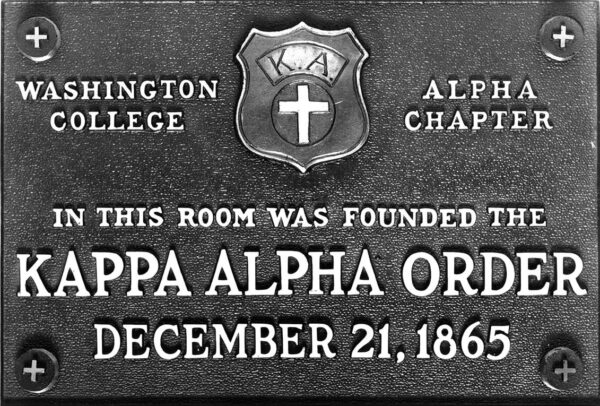
Phi Kappa Chi
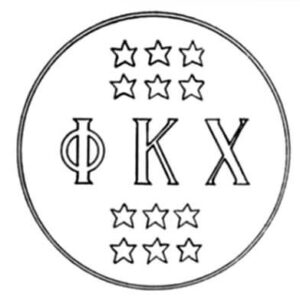 Wood chose the name for the new group and called it Phi Kappa Chi. The name had no meaning, and it is likely that Wood merely chose it to rival the popular Phi Kappa Psi, whose members had been rude to him. Though Will Scott may have assisted somewhat, the ritual of the first fraternity was primarily drafted by Wood. The ceremony he penned was brief but contained a great theme which endures even today. The ritual never mentioned the name Phi Kappa Chi, nor made any allusion to it. In fact, the ceremony communicated a life philosophy more than identity with a name. Wood organized the group and selected his friend Will Scott as the first Number I; Walsh, Number II; and Wood, Number III. Wood reported that “Christmas delayed the group somewhat,” but they became known as a fraternity in the spring of 1866.
Wood chose the name for the new group and called it Phi Kappa Chi. The name had no meaning, and it is likely that Wood merely chose it to rival the popular Phi Kappa Psi, whose members had been rude to him. Though Will Scott may have assisted somewhat, the ritual of the first fraternity was primarily drafted by Wood. The ceremony he penned was brief but contained a great theme which endures even today. The ritual never mentioned the name Phi Kappa Chi, nor made any allusion to it. In fact, the ceremony communicated a life philosophy more than identity with a name. Wood organized the group and selected his friend Will Scott as the first Number I; Walsh, Number II; and Wood, Number III. Wood reported that “Christmas delayed the group somewhat,” but they became known as a fraternity in the spring of 1866.
KA
The other societies at Washington College resented the appearance of a new secret society on campus. Phi Kappa Psi was especially perturbed at Wood’s choice of a name for the group. Wood soon realized that his brotherhood was growing and needed a separate identity. By April of 1866, Wood chose the letters “KA” for his “Lodge.” Like Phi Kappa Chi, “KA” initially had no meaning. Coincidentally, an old society, Kuklos Adelphon, founded at the University of North Carolina in 1812, had all but perished during the war. Kuklos Adelphon’s relation to our KA was, “in name only,” according to an interview with Wood. Research has proven no connection or history between either organization or the Kappa Alpha Society, having been founded in 1825 at Union College.
The new organization began to grow, and it had initiated seven additional members by the end of the 1866 spring term. The other fraternities were obviously intimidated by the presence of KA In May of 1866, Wood was approached by a senior professor at the college, a member of Phi Kappa Psi, who urged him to abandon his efforts. Wood respectfully declined that offer.
Transformation and Purpose (1867)
The 1866-67 school year brought promise to Washington College and KA largely because of Lee’s presidency at the school, the enrollment more than doubled to nearly 400 students. KA initiated seven more members into its group that fall. On the evening of October 17, 1866, twenty-two year-old Samuel Zenas Ammen of Fincastle, Virginia became a member of KA.
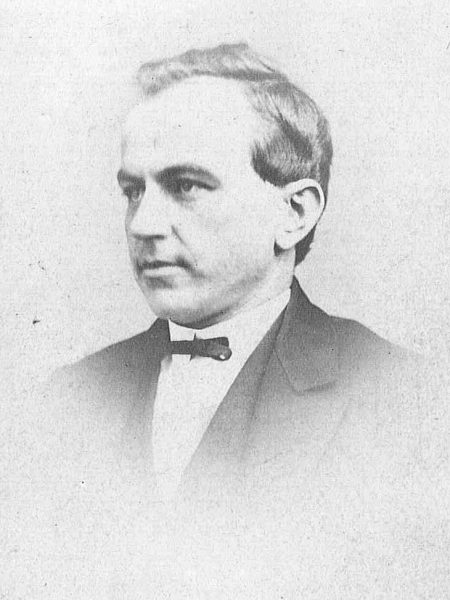 Ammen was no ordinary student; because of his intellect, he was given advance standing when he arrived at Washington College, and he was a veteran of the Army of Northern Virginia and
Ammen was no ordinary student; because of his intellect, he was given advance standing when he arrived at Washington College, and he was a veteran of the Army of Northern Virginia and
its Navy, as well. Ammen was a serious student, immaculate in appearance and precise in manner. He was very confident, and Will Scott, who bestowed nicknames on his brothers, dubbed him, “Lord.”
Ammen’s initiation into this early group was conducted with a revised version of the ritual first penned by Wood. It is clear from his own writings that while Ammen was certainly moved by certain parts of the ceremony, he felt that it was too brief and uninspiring.
Ammen had significant fraternal experience. He had been made a Master Mason in his hometown lodge in Fincastle in 1865. As a Mason, he was well versed in organized ritual which had been refined over hundreds of years. Ammen would later say that this first ritual had “nothing to touch the imagination of initiates nor stir their fancy.” However, Ammen was inspired by the possibilities of this young fraternity and its members whom he greatly respected. He urged the society to enhance its initiation ceremonies and was soon selected by his chapter brothers to take an active role in those efforts.
A New Ritual
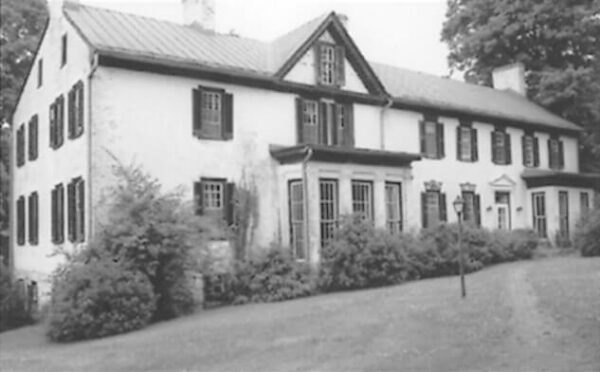 In Wood’s room at Sunnyside in November 1866, Ammen and Wood discussed possibilities for a new ritual, and it was agreed that Ammen should continue the work. At Ammen’s suggestion, the chapter approved a new meaning for KA on November 23, 1866. The chapter placed its confidence in Ammen and he, along with Wood and Will Scott, were appointed to a committee to review the ritual in its entirety.
In Wood’s room at Sunnyside in November 1866, Ammen and Wood discussed possibilities for a new ritual, and it was agreed that Ammen should continue the work. At Ammen’s suggestion, the chapter approved a new meaning for KA on November 23, 1866. The chapter placed its confidence in Ammen and he, along with Wood and Will Scott, were appointed to a committee to review the ritual in its entirety.
In order to gather material, Ammen received Wood’s ritual, observed the chapter’s activities and listened to their collective ideals and beliefs. He was particularly impressed by an essay
presented to the chapter by Wood on November 30, 1866, wherein the life of the ancient Order of Knights Templar was detailed as a model of inspiration for the group’s purpose.
Ammen, Scott, and Wood conferred on several occasions, many times late into the night. Wood presented Ammen with the “papers” that he had written and Ammen preserved a few of its impressive parts and began construction of a new ritual, with a new vehicle for communicating the great theme of KA.
Nearly two decades later, Will Scott would write to Ammen, “The Ritual was all so altered, changed and improved upon, mainly by you, that we can say it underwent a complete regeneration, or new birth.” Ammen later related that Wood was completely deferential to his advanced experience with the esoteric. Indeed, Wood’s departure from school was only a few weeks away. Wood’s own correspondence with the Order over the remainder of his life indicates that he confidently left the fraternity he began under the stewardship of Ammen.
Wood never hesitated to credit Ammen with transforming his KA “Lodge” into the Order of national prominence that it remains today. Ammen’s constant refinement of the ritual and creation of the constitution, by-laws, grip, symbols and regalia of the Order, along with his lifelong commitment ultimately earned him the title of Practical Founder of Kappa Alpha Order.
Ammen later revealed, “Material for my work was gathered from many sources — books, chapter experience and essays read at chapter meetings. During this formative period, the ruling ideas were suggested mainly by the ideas and aspirations expressed in essays of leading members. The present ritual, in fact, was not made; it grew.” It grew from a seed planted by Wood. The new ritual transformed KA into Kappa Alpha Order, an order of Christian knights (first inspired by Wood’s November 1866 essay to Alpha Chapter and set to work by Ammen) pledged to the highest ideals of character and personal achievement. Ammen and his Alpha Chapter brothers sought to preserve the virtues of chivalry, respect for others, honor, duty, integrity and reverence for God and woman.
Challenges
Despite the milestone of establishing a solid identity and presence at Washington College, the young Order was not without the startup problems typical with most new organizations. Indeed, the brothers of Old Alpha stood at a crossroads. The chapter expelled members who violated their obligations and were not strong enough to endure growing pains. Will Scott, the chapter’s first Number I, was preparing to leave Lexington to attend seminary, and the chapter brothers had to decide whether they should keep up the effort.
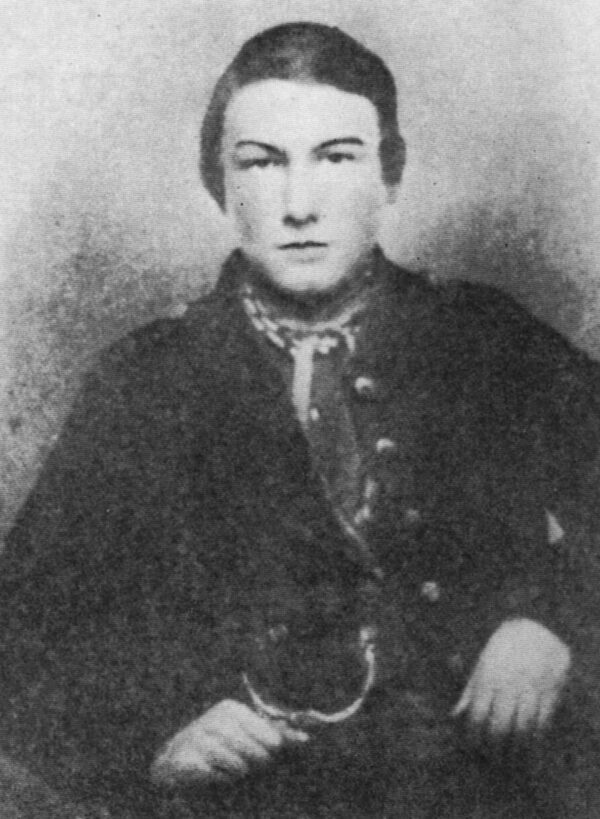 One starry night in May 1867, Ammen and Jo Lane Stern, a recent initiate with whom he had become fast friends, were taking one of many walks they enjoyed together throughout their lives. This particular evening, they were discussing the future of their young fraternity. They paused along the way, and sat on the steps of White’s General Store, on the corner of Lexington’s Main and Nelson streets. There, they seriously contemplated the viability of Kappa Alpha and whether or not they should continue the chapter. They asked, “Shall we let the Lodge die?” Ammen well-remembered that conversation and later recalled, “The outcome was a decision to keep up the fight, and from that time on our prospects improved.” Clearly, Ammen and Stern spearheaded that effort. For that reason, Stern is appropriately given a status on par with our founders.
One starry night in May 1867, Ammen and Jo Lane Stern, a recent initiate with whom he had become fast friends, were taking one of many walks they enjoyed together throughout their lives. This particular evening, they were discussing the future of their young fraternity. They paused along the way, and sat on the steps of White’s General Store, on the corner of Lexington’s Main and Nelson streets. There, they seriously contemplated the viability of Kappa Alpha and whether or not they should continue the chapter. They asked, “Shall we let the Lodge die?” Ammen well-remembered that conversation and later recalled, “The outcome was a decision to keep up the fight, and from that time on our prospects improved.” Clearly, Ammen and Stern spearheaded that effort. For that reason, Stern is appropriately given a status on par with our founders.

